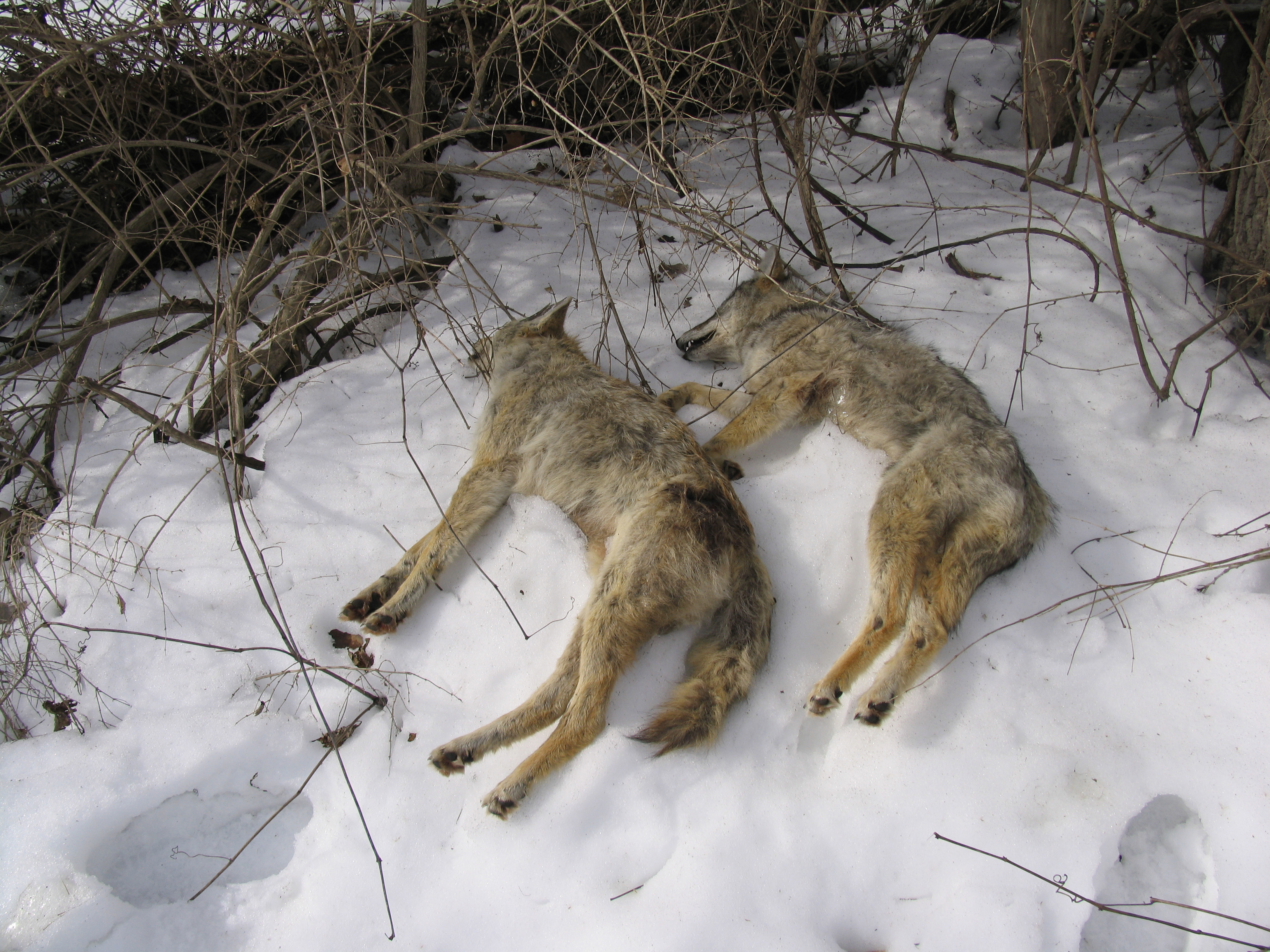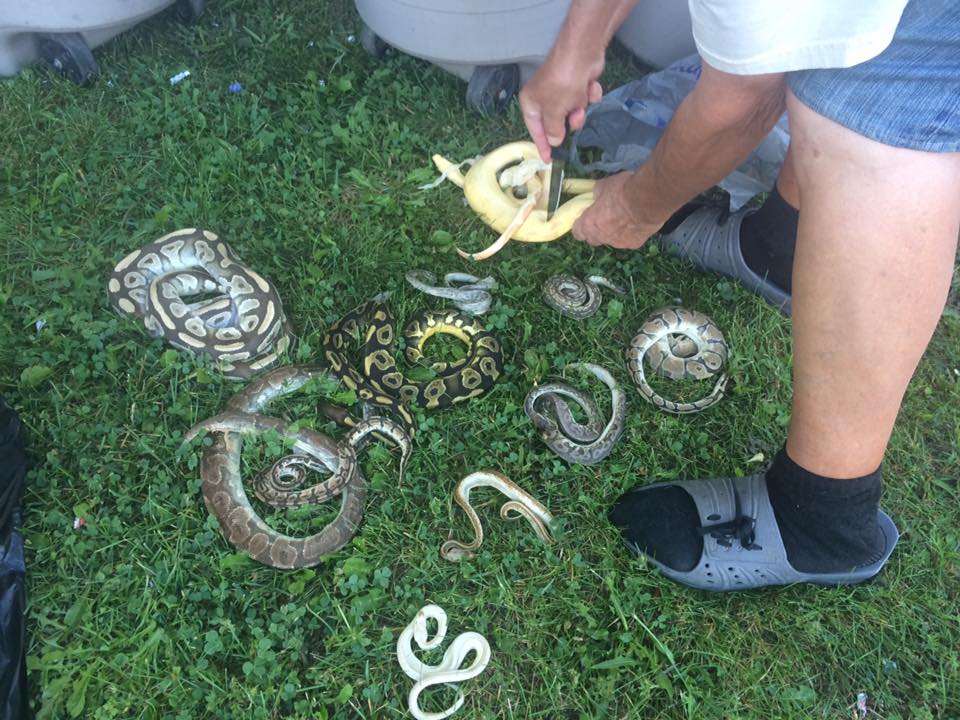The sleepy hamlets that speckle the surrounding area of London, Ontario, have a deep and at times sinister history.From the infamous ‘Black Donnellys’ of Lucan, Ontario — whose gruesome death in 1880 has been deeply entrenched in the folklore of the many nearby farming communities — to more recent and sensationalized killers of the 1970’s like the ‘Mad Slasher’ and the ‘Bedroom Strangler’, the region has been no stranger to violent crime.Cold-case research led former cop and criminologist Michael Arntfield to write a book about how London was once the serial killer capital of the world.Today, he believes he’s witnessing all the signs of an escalating — and sexually sadistic — serial killer in the making.Since 2015, as many as 25 animals in as many as eight separate instances have been found mutilated and killed in and around London. Multiple coyotes. Exotic snakes. A house cat, a bunny, eventually even a small dog. Some remains were left in plain sight; others hidden from view. There were startling similarities among some casualties. More than once, the species in question wasn’t readily apparent: the two dogs found beheaded and skinned behind a grocery store on Trafalgar Street in February, 2016, turned out not to be dogs after all, but coyotes. And so far, nothing has definitely linked the cases. In fact, many of them have been brushed off as isolated incidents. But Arntfield, who has helped draw attention to the situation through media interviews, sees a pattern of escalation — the victims have gone from being wild animals that could be trapped or hunted to domestic pets, and they were discovered in increasingly more well traveled areas.He’s operating under the assumption that most, if not all, of the killings were committed by one person — something no one else has publicly speculated.“The larger issue is for months, in fact a year, no one seems to have really recognized the larger criminal significance of this,” Arntfield said in an interview. “This is not a prank, this is something more sinister.”Arntfield, a former cop and professor of criminology at the University of Western Ontario, talks extensively in his classes about the early warning signs of sexual sadists, who gain pleasure from killing people. And he thinks that is what is happening here. “We’re dealing with someone who’s doing this for a sexual purpose,” he said.Not long after the snakes were discovered in front of a suburban home, as Arntfield explains, in the exact same locations, coaxial cables were discovered molded and arranged in a disturbingly similar fashion to the snakes in the original scene.“Clearly they were relying on photographs.”“I’ve bounced this off some colleagues of mine and other experts around the world and there is no known case where someone has done that so soon after,” said Arntfield, “And we don’t know exactly what it means, but it’s not good.”Arntfield received a photo taken on Oct. 16, 2016 of as many as six birds lying in a seemingly intentional arrangement, all reportedly with their necks snapped and their beaks crushed. They were found at Rogers Avenue near Wilson St., a location relatively close to the university and where those original coyotes were found.Greg Thorn, an associate professor of biology and geological sciences at Western, was alerted by a student to one set of coyotes found on campus in March of 2015. He went to check out the scene for himself and found, behind Western’s Staging Building, near a residence hall, two dead coyotes laid beside each other about 20 feet from a walking trail.Thorn says he was in disbelief. “What was really surprising was that they were carried there dead,” he said.None of these instances have resulted in an official determination of cause of death.“That’s one of the troubling things about this story, actually, is that in all of these cases, we don’t know when the animal actually lost it’s life,” said Foster.A spokesperson for the London Police Service told VICE News that they were initially only made aware of two cases — the coyotes found behind a grocery store in February of 2016 and the beheaded dog discovered in December.The knowledge of the shock of a discovery like that is part of what drives this person, says Arntfield.“They were placed the way a retailer would place merchandise to attract attention. They weren’t thrown or just dumped,” said Foster, with the local humane society. “They were left outside […] in an area where a lot of people are going to see them and come across them, be startled by them.”
Anyone with information can contact the London Humane Society (519) 451-0500 / Crime Stoppers 1 (800) 222-TIPS (8477)Timeline
And so far, nothing has definitely linked the cases. In fact, many of them have been brushed off as isolated incidents. But Arntfield, who has helped draw attention to the situation through media interviews, sees a pattern of escalation — the victims have gone from being wild animals that could be trapped or hunted to domestic pets, and they were discovered in increasingly more well traveled areas.He’s operating under the assumption that most, if not all, of the killings were committed by one person — something no one else has publicly speculated.“The larger issue is for months, in fact a year, no one seems to have really recognized the larger criminal significance of this,” Arntfield said in an interview. “This is not a prank, this is something more sinister.”Arntfield, a former cop and professor of criminology at the University of Western Ontario, talks extensively in his classes about the early warning signs of sexual sadists, who gain pleasure from killing people. And he thinks that is what is happening here. “We’re dealing with someone who’s doing this for a sexual purpose,” he said.Not long after the snakes were discovered in front of a suburban home, as Arntfield explains, in the exact same locations, coaxial cables were discovered molded and arranged in a disturbingly similar fashion to the snakes in the original scene.“Clearly they were relying on photographs.”“I’ve bounced this off some colleagues of mine and other experts around the world and there is no known case where someone has done that so soon after,” said Arntfield, “And we don’t know exactly what it means, but it’s not good.”Arntfield received a photo taken on Oct. 16, 2016 of as many as six birds lying in a seemingly intentional arrangement, all reportedly with their necks snapped and their beaks crushed. They were found at Rogers Avenue near Wilson St., a location relatively close to the university and where those original coyotes were found.Greg Thorn, an associate professor of biology and geological sciences at Western, was alerted by a student to one set of coyotes found on campus in March of 2015. He went to check out the scene for himself and found, behind Western’s Staging Building, near a residence hall, two dead coyotes laid beside each other about 20 feet from a walking trail.Thorn says he was in disbelief. “What was really surprising was that they were carried there dead,” he said.None of these instances have resulted in an official determination of cause of death.“That’s one of the troubling things about this story, actually, is that in all of these cases, we don’t know when the animal actually lost it’s life,” said Foster.A spokesperson for the London Police Service told VICE News that they were initially only made aware of two cases — the coyotes found behind a grocery store in February of 2016 and the beheaded dog discovered in December.The knowledge of the shock of a discovery like that is part of what drives this person, says Arntfield.“They were placed the way a retailer would place merchandise to attract attention. They weren’t thrown or just dumped,” said Foster, with the local humane society. “They were left outside […] in an area where a lot of people are going to see them and come across them, be startled by them.”
Anyone with information can contact the London Humane Society (519) 451-0500 / Crime Stoppers 1 (800) 222-TIPS (8477)Timeline
Advertisement
“At that point, I never thought it would be repeated,” Judy Foster, Executive Director of the London Humane Society, told VICE News.The ten snakes found in front of a house that September had their heads crushed. The cat was gutted, its intestines neatly and intentionally arranged in Springbank Park. The bunny was skinned. The small dog was decapitated.Beyond the gruesome details, little else is known publicly about the deaths. The London Police Service has provided no information to the public regarding the discoveries and has not put out any formal request for information.“At that point, I never thought it would be repeated.”
Advertisement

His book, entitled Murder City and released in 2015, talks about the psychological, geographical and circumstantial factors that collided to create a perfect storm in the 60s, 70s, and 80s, during which London saw as many as six serial killers operating at one time, more per capita than anywhere else in the world.“We’re dealing with someone who’s doing this for a sexual purpose.”
Advertisement
Advertisement
The Humane Society, Ontario’s Ministry of Natural Resources and the Western University Campus Police were also notified and investigated cases within their jurisdictions — the coyotes found north of the city and on campus — but declined to comment on cases they were involved in and referred to the ongoing investigation by the London Police.“The London Police are currently investigating the matter,” said Constable Sandasha Bough, a public relations officer for the London Police Service. “And therefore we can’t speak about an ongoing investigation at this time.”While it remains unclear as to exactly where these animals came from, there is one case that has been resolved: that of a mutilated goose that was dropped off at the front door of the London Humane Society. It was later determined that this bird had been dropped off by a samaritan after hitting it with their vehicle.Still, Arntfield is convinced that the remainder of the instances portray some sinister behaviour.“The position of the animals and the nature of the mutilations are becoming more extreme, and they’re being left in more populated areas,” said Arntfield.“The position of the animals and the nature of the mutilations are becoming more extreme.”
Advertisement
- In 2015, three disturbing and eerily similar discoveries were made both along the Medway River on the campus of the University of Western Ontario, in Parkhill, and near a walking trial in Ailsa Craig — both suburbs northwest of London. In each location, two coyotes were left mutilated, some beheaded and all gruesomely displayed.
- In February 2016, police were called after what was thought to be two dogs were discovered beheaded, skinned, and left behind a Metro grocery store on Clarke Rd. near Trafalgar St. It was later determined that they were not dogs, but coyotes.

- In September of 2016, London resident Kate Fowler discovered more than 10 snakes at the curb in front of her home and posted them on Facebook. Believed to be exotic breeds and therefore pets, the snakes were left dead, and according to Arntfield, posed and with their heads crushed.
- On July 24, 2016, a mutilated house cat was found in Springbank Park. Believed to have been tortured to death, the cat was found along a walkway, in a highly visible location, gutted and with its intestines neatly and intentionally arranged nearby.
- Sometime later, in August, a bunny – skinned and beheaded – was discovered along a walking trail on, once again, Western campus.
- The last known incident, on Dec. 16, occurred when someone found a skinned and beheaded ‘animal’ (as reported at the time) behind the Beer Store, on top of a dumpster, at Adelaide Street and Lorne Avenue. It was later determined that the animal was a small breed dog. Some of its organs had been removed.
